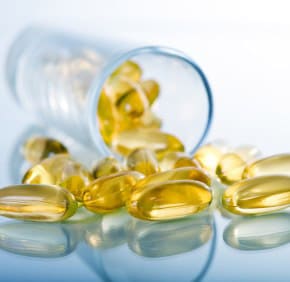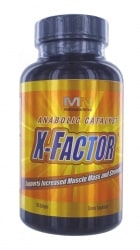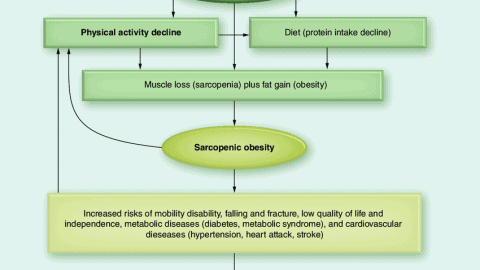“The human body is an infinitely complex, but wholly logical system” – Will Brink
Back in the day I wrote the first article on the value of omega-3 fatty acids (via fax oil) for health and fat loss in the major bodybuilding publications. In fact, my first article on the value of flax oil – a source of the Omega 3 lipid LNA – was rejected because the very idea of intentionally adding fat to lose fat and improve health was such a foreign concept at that time. Yes, we are talking pre Internet here! Lucky for me, another magazine – MuscleMag International – ran the article, and the rest is history. It’s safe to say I have been researching and writing about Essential fatty acids (EFA’s), the value of omega-3 fats, the importance of balancing fatty acid intakes, and so forth, for a extensive amount of time. I am also partially to blame for the overly simplistic view of these fatty acids that followed and hope to atone for that with this article.
Much of what we understood at that time, and is still being pushed to this day by some, was an overly simple and generalized view of the essential fatty acids (EFA’s) and their effects on human physiology. As time progressed, and additional research was published, the picture has become much more refined and accurate.
The old paradigm could be essentially summarized as “Omega-3 good, Omega-6 bad” and that was about it. Other than a few who have really taken the time to research the topic, a position that remains to this day. Per usual, such entrenched views tend to change very slowly.

How did that start? Early research found the Standard American diet (SAD) provides excessive intakes of omega-6 lipids and minimal omega-3 lipids which resulted in an elevated omega-6/omega-3 ratio. As science writer Monica Mollica put it so accurately in her recent article on BrinkZone.com,
“In turn, an elevated omega-6/omega-3 ratio has been linked to a number of common chronic diseases, notably cardiovascular diseases, inflammatory diseases, cancer, and certain psychiatric diseases such as depression. The omega-6 fatty acid that has been vilified and blamed to give rise to these detrimental health outcomes is arachidonic acid (ARA).” Hence, we ended up with an “Omega-3 good, Omega-6 bad” model that attributed most of the negatives to ARA, with advice people should avoid ARA. Those concerned with their health increased their intake of omega-3 fats via fish, flax, supplements, etc., and reduced their intake of omega-6, to improve their 03/06 ratios.
All well and good, but it’s just not that simple as life rarely is, much less human biology. As Candice Pert Ph.D., discoverer of the opiate receptor said “Whenever something does not fit the reigning paradigm, the initial response in the mainstream is to deny the facts.” Such is the case with the “Omega-3 good, Omega-6 bad” model that some cling to in spite of the ever mounting data showing it to be an outdated model not supported by the modern data.
Modern research strongly supports the finding that simply taking in excessive Omega-3 with minimal Omga-6 is not the optimal path to good health nor getting best results from your efforts in the gym. Yes, people following SAD generally need to eat more Omega-3 and less Omega-6 containing oils – among many health behavior changes they’d benefit from – but for those who eat a healthy diet, are active, and likely take Omega-3 ( fish oil ) supplements, it’s time to change your paradigm. This article is not a brain twisting tour de force on the hard science on this topic, but for those who want the “hard” science and full citations, I have linked recent articles by Monica Mollica who covers the topic in great depth for the science minded through out this article. This article is more to summarize the essential details regarding this needed shift in paradigm where Omega 3 lipids (in particular EPA & DHA) are viewed as “good guy” fats and Omega 6 (in particular ARA) are viewed as the “bad guy” fat. The fact is, data suggests ARA, and ARA combined with EPA/DHA, the optimal approach to improved strength, body composition, and health. In fact, if you have been taking high dose fish oils for a while, and avoiding sources of Omega 6 fats (containing linoleic acid) and pre formed ARA, you may be ARA deficient!
The picture that’s emerged is that there’s a complex interaction between Omega 3 lipids EPA/DHA and Omega 6 derived ARA. It’s not a matter of “good” vs. “bad” but of balance. The fact is, again, as with so much in life, balance becomes the key issue to long-term success. For those who want the hard science with full sources to support the information I’m covering here, see article #1 in the series HERE.
The take home here is, ARA is not the “bad” guy fatty acid, and when in the correct balance with Omega-3 lipids, may confer additional health benefits and improve the response to resistance training and improve body composition. The old model was originally viewed as :
Omega -3 = anti inflammatory and
Omega-6 = pro inflammatory.
However, the truth is, both are mediators of pro/anti inflammatory responses and essential to a balanced response that assists the immune system with challenges of various types, both external and internal.
Safety of Supplementing with ARA.

The early studies that associated negative health outcomes with ARA, were just that: association or correlational studies. That’s not the same as showing causation, a mistake often made by non-scientists, and some who should not better. These studies have their uses for sure, but people make the “correlation equals causation” mistake when presented with such studies, and that’s a bad science and a common mistake. What’s far more telling and useful, is direct intervention studies where you feed the person X in a controlled setting, and see how they respond over a given time period. A plethora of studies confirmed that giving people supplemental ARA did not negatively impact the health indicators ARA was expected to impact . Translated, feeding people ARA at doses far higher than most diets supply in a controlled setting did not negatively impact them. Again, per Monica’s extensive review of the safety literature with ARA:
“When healthy volunteers were given over 7 times the usual intake of ARA (i.e. 1500 to 1700 g ARA per day, compared to usual intake of 200 mg ARA per day) in a 7 week controlled feeding study, no effects on platelet aggregation, bleeding times, the balance of vasoactive metabolites, serum lipid levels, or immune response were observed. Likewise, in a recent study on healthy men aged 26-60 years, supplementation with 840 mg ARA per day for 4 weeks had no effect on any metabolic parameter or platelet function.”
But There’s More!
As the late night infomercials like to say, there’s still more to the story. Not only does supplementing ARA fail to show a negative impact on various health indices when directly tested via controlled feeding studies, it appears to also have direct health benefits. What’s most interesting is that data suggests some of the downstream compounds produced in the body from ARA actually work in concert with those produced from EPA and DHA for both health and building muscle, or improving body composition. As I said, it turns out the interplay between these different essential fatty acids and their active downstream metabolites is considerably more complex, subtle, and interrelated than was previously understood or appreciated. Again, it appears balance is the important focus, and adequate tissue levels of EPA/DHA and ARA are the key, not simply viewing one as the “good guys” and the other a “bad guy.” Understand, this goes against decades of ingrained dire warning of ARA ingestion which applied to those with inadequate intakes of Omega-3 fats (with corresponding low tissue levels) and an excess of Omega-6 fats, in combination with various other life style habits (lack of exercise, excess calories, etc.) that lead to negative health outcomes. If you’re one of those people, ARA supplements would not be recommended for you…
If readers want to see additional info and the published data on that issue of safety and potential health benefits, and other pertinent info mentioned in this article briefly covers above, click HERE for more info on that topic.
The 3/6 Ratio
As alluded to several times via using the term “balance” in regards to Omega-3 and Omega-6 intakes, that’s just a non technical term really for “ratio.” Obviously a balanced intake of these fats is what leads to desired 3/6 ratios in tissues vs. the lopsided ratio that results from either an excessive intake of omega 6 or omega 3 rich diets. You do have a surprising number of people and health “guru” types who are under the impression one can’t ingest too much Omega-3 lipids or too little Omega -6, and that’s simply incorrect. The reality is, trying to constantly chase down the “perfect” 3/6 ratio is an act in futility and chasing your proverbial tail and you’ll make yourself nuts attempting it. Improving the ratio is easy, finding the “perfect” ratio, not so much. Or as Monica put it so succinctly:
“Another problem with the omega-6/omega-3 is that it does not distinguish between the different omega-6 (LA, GLA, ARA) and omega-3 fatty acids (ALA, EPA, DHA), which all have different effects (albeit sometimes overlapping), and the ratio can be changed in many different ways . Also, the omega-6/omega-3 does not say anything about absolute tissue levels of each individual omega-6 and omega-3 fatty acids, which is likely the factor that matters the most. Therefore, comprehensive reviews by leading nutrition researchers have concluded that the omega-6/omega-3 ratio is misleading and not useful…”
For an in-depth discussion on that topic with citations, click HERE.
Who should supplement ARA?
As studies have made clear in the more in-depth linked articles, the conversion from the parent Essential Fatty Acids (LA & LNA) to their active lipids (EPA/DHA/ARA) is quite low, and can vary considerably between individuals due to a number of variables. Thus, most people tend to take the “fish oils” which contain the active pre-formed Omega-3 lipids EPA/DHA. The same would go for ARA. Those currently taking supplemental “fish oils” will likely benefit from adding supplemental ARA. Specific recommended doses for each are covered in depth in the linked article above. General recs are, if you’re taking fish oil supps supplying several grams daily of EPA/DHA, 1-1.5g of ARA should be of benefit to general health and increased strength and LBM. The recent study that found increases in strength, muscle mass, and performance used 1.5g per day of ARA. If you’re not using fish oil supplements, or have a pre existing inflammatory condition, and or, follow a SAD diet, and are not active, than ARA supplements are potentially contraindicated for you.
ARA For Strength Athletes
Now we get down to the nitty gritty of why many are reading this article. Most have heard of ARA as a supplement that may increase muscle mass and strength. The reason for that is complex, but a recent study was very promising that ARA, in the correct dose, positively impacts strength, body mass and performance. I’ll give an overview of this recent study, and for those who want to dive more into the data and possible mechanisms as to how ARA impacts muscle mass and strength, full write up is HERE with the abstract below.
The study entitled, “Effects of Arachidonic Acid Supplementation on Skeletal Muscle Mass, Strength, and Power” examined the effects of 1.5g per day of ARA for 8 weeks on muscle hypertrophy, body composition, strength, and power, compared to a placebo matched control. For those who don’t enjoy reading abstracts and studies, here’s the cliffs notes followed by the full details:
• The group receiving 1.5g of ARA had in increase in lean body mass (LBM) of approx 3%, corresponding to 3.5 lb (1.6 kg) compared to no changes in the placebo group
• Muscle thickness increased in the group receiving ARA (+9.5%) vs. the placebo group (+4.7%).
• There was an improvement in anaerobic power (via Wingate test which measures 30 second maximal output), which increased in the group getting ARA (+10.7%) vs. the placebo group (+3.8%).
• The group receiving ARA increased their bench press and leg press strength to a greater degree than the placebo group.
Conclusions
This article attempts to summarize and distill down a great deal of information on a complex topic. What should be clear from this summary is the Omega-6 lipids vis a vis ARA is not a “bad” guy fatty acid to be avoided, may confer health and strength/performance benefits in the correct populations, and the old paradigm is in need of a change. I’m used to bursting bubbles on long held cherished beliefs and challenging outdated attitudes on all manner of topics, so this is nothing new. I was the first to publish an article in the mainstream bodybuilding/fitness publications on the benefits of Omega-3 fats for body builders and other athletes, and maybe now can atone for my sins against ARA!
Study Abstract:
Effects of Arachidonic Acid Supplementation on Skeletal Muscle Mass,
Strength, and Power
Jacob Ormes1, Matthew H. Sharp, Jordan M. et al.
Department of Health Sciences and Human Performance, The University of Tampa, Department of Health and Exercise Science, Auburn University
Introduction
Arachidonic acid (ARA) is a long-chain omega-6 polyunsaturated fatty
acid that can be integrated into membrane phospholipids and it is the primary
substrate for COX-2-mediated biosynthesis of prostaglandins [1].
Previous research found that ARA could enhance power and tended to
increase strength and hypertrophy [2]. However, a lack of power likely
prevented these values from reaching significance. Therefore, the purpose
of this study was to investigate the effects of 8 weeks of arachidonic
acid supplementation in individuals participating in a periodized resistance
training program on skeletal muscle hypertrophy, body composition,
strength, and power relative to a placebo matched control.
Materials & Methods
Thirty recreationally-trained males aged 20.4 ± 2.1 years with a respective
average leg press and bench press of 231.5 ± 55.6 kg and 103.9 ± 26.8 kg
and a minimum of 1 year of resistance training experience were recruited
for the study. All subjects participated in an 8-week, 3-day per week,
resistance-training program that was split-focused on multi-joint movementssuch as leg press, bench press, and bent-over rows. Ultrasonography
measured muscle thickness of the quadriceps, dual-energy X-ray
absorptiometry (DEXA) determined lean body mass, power, and strength
of the bench press and leg press were determined at weeks 0, and 8 of
the study.
Results
There were time, and group-by-time interactions for LBM (p<0.05) in
which LBM increased from pre (Placebo 57.7± 4.8kg; ARA 57.6 ± 5.0kg,)
to post (Placebo 57.8 ± 5.6kg; ARA 59.3 ± 5.0 kg,) only in ARA group, but
not the placebo. Delta change of LBM was significantly greater in the ARA
group (1.62 ± 0.01kg) than the placebo (0.09 ± 0.7) (p<0.05). The Delta
change for muscle thickness was greater in the ARA group (.47 ± .08 cm)
than the placebo (.25 ± .04 cm) (p<0.05). There was a time, and group by
time interaction for wingate power, in which power increased to a greater
extent in ARA (723.01± 104.53 W to 800.66 ± 112.60 W) than the placebo
(738.75 ± 129.76 to 766.51 ± 136.52 W). Delta change for total strength
was greater in the ARA group (109.92 ± 33.25) than the placebo (75.78
± 12.41).
Conclusions
These results suggest that ARA supplementation can positively augment
adaptations in strength and skeletal muscle hypertrophy in resistance-
trained men. Athletes and everyday individuals looking to maximize
their body composition, strength, and power could use ARA as an ergogenic
aid.
Will Brink is the owner of the Brinkzone Blog. Will has over 30 years experience as a respected author, columnist and consultant, to the supplement, fitness, bodybuilding, and weight loss industry and has been extensively published. Will graduated from Harvard University with a concentration in the natural sciences, and is a consultant to major supplement, dairy, and pharmaceutical companies.
His often ground breaking articles can be found in publications such as Lets Live, Muscle Media 2000, MuscleMag International, The Life Extension Magazine, Muscle n Fitness, Inside Karate, Exercise For Men Only, Body International, Power, Oxygen, Penthouse, Women’s World and The Townsend Letter For Doctors.
He’s also been published in peer reviewed journals.
Will is the author of the popular e-books, both accompanied by private members forum access , Bodybuilding Revealed & Fat Loss Revealed.
You can also buy Will’s other books on Amazon, Apple iBook, and Barnes and Noble.









Will,
Thanks for an interesting article.
Moinca’s quote of the study you also reference includes,
…”Subjects could not participate if they were currently taking any medications including anti-inflammatory agents, any performance enhancing supplements, or if they smoked. Specifically, subjects could not have taken nutritional supplements for at least three months prior to data collection.”
From that, I am inferring theses subjects were not also taking fish oil supplements.
Has there yet been a published study on the effects of body composition/strength change which allows it’s participants to use BOTH fish oil and ARA, instead of just ARA alone? If not, combing both of these supplements, as opposed to supplementing with ARA alone, seems like an untested option. Am I missing something?
Thanks again for a great site. It’s the only one I trust.
Jim
Not that I’m aware of that looked at effects on strength or body comp no. That would be an interesting study for sure. I think you’d want to also see what their pre treatment n3/n6 tissue status was for such a study also.
Will,
Why does the company that makes X-Factor (ARA) recommend not taking Omega-3 supplements with it? At least in the past, they have been very specific in saying to avoid the Omega-3s while using ARA. Is this just the old way of thinking?
You’d have to contact Molecular Nutrition (makers of X factor) and ask, but their X Factor Advanced products contains fish oil, so does not seem to me they feel there’s an issue with taking them together.
Thanks for the answer, Will. Do you have any preference between the 2 products? I am already using what I consider to be pretty high quality fish oil from Biotest and Vital Choice, so maybe continuing that with the original would be the way to go?
Also, great work on the Sled-Centric Program. I picked it up a few weeks ago and have started to incorporate sled work into my routine using my sled (I have a Sorinex Root Hog Sled). After I finish my current cutting/recomp phase I’m going to do the entire program for 2 months and see if I can get my wife to do it as well.
I’d probably take regular X Factor along with my favorite fish oils supp vs the Advanced product, but I have not looked at the Advanced product to compare EPA/DHA dose per $$$ spent and all that. Might be fine for those who just want one product with ARA/EPA/DHA together but I prefer my fish oil supp separate personally.
Sled centric is getting some great feedback. You can see a few on the Amazon sales page. Please leave your feedback and experience with the program when you can. That would be great.
Thanks for the insight. Are there any common supplements or types of supplements that might interfere with ARA? I am usually on several different supplements at once during heavy programs and don’t want to have things cancelling each other out.
Hi Will,
what sources of food contain good amounts of ARA? or what omega 6’s should i eat to balance out the intake of 3/6? thanks.
If you google something like “Foods High in Arachidonic Acid” you’ll find them. However, like EPA/DHA difficult to get optimal amounts via food alone. Two, make sure you’re someone who ARA supplementation makes sense, as outlined in the article.
Will, do you know if this study has been peer-reviewed? From what I can find, it appears to be just a poster presentation at a conference last month. The topic is interesting, because the first study paid for by Molecular Nutrition found that “arachidonic acid supplementation had no statistically significant effects on strength, muscle mass, hormonal markers of anabolism/catabolism, or intracellular markers of muscle hypertrophy,” according to the researchers. (http://www.jissn.com/content/4/1/21) The set-up of both tests was roughly equivalent, so it makes me wonder why the MN product had no effect the first time, and then a positive effect the second time.
My understanding is a full paper is in process that also look at the mechanistic aspects and other details that will be submitted. As I know several of the researchers on that paper, I have little doubt it will fail peer review and not be published.
The major difference between the first and second study is dose, but the second better controlled and had greater statistical power. First study found a trend, but didn’t reach stat sig on some endpoints, the second did reach stat sig on endpoints examined, and that likely due to above factors.